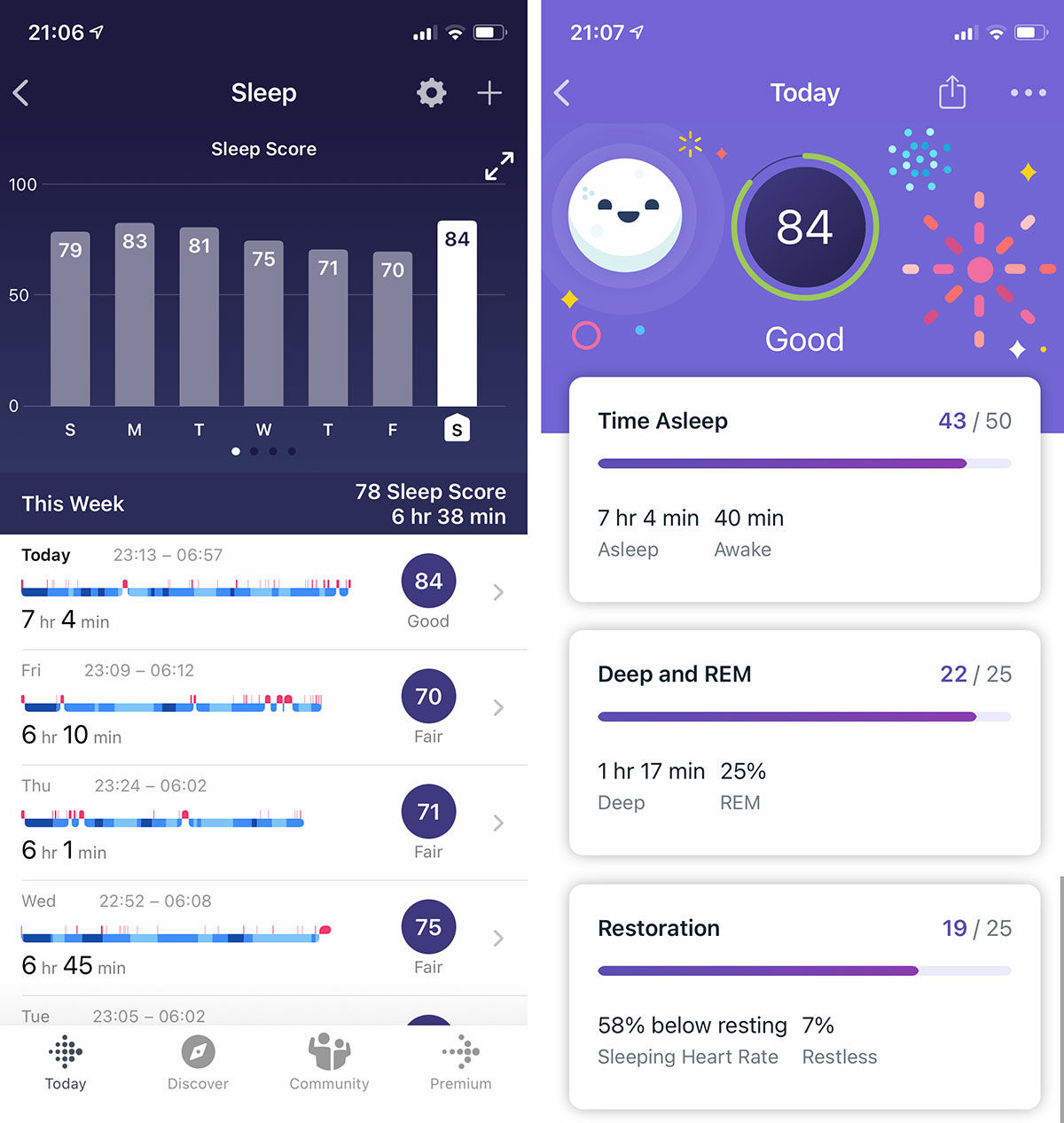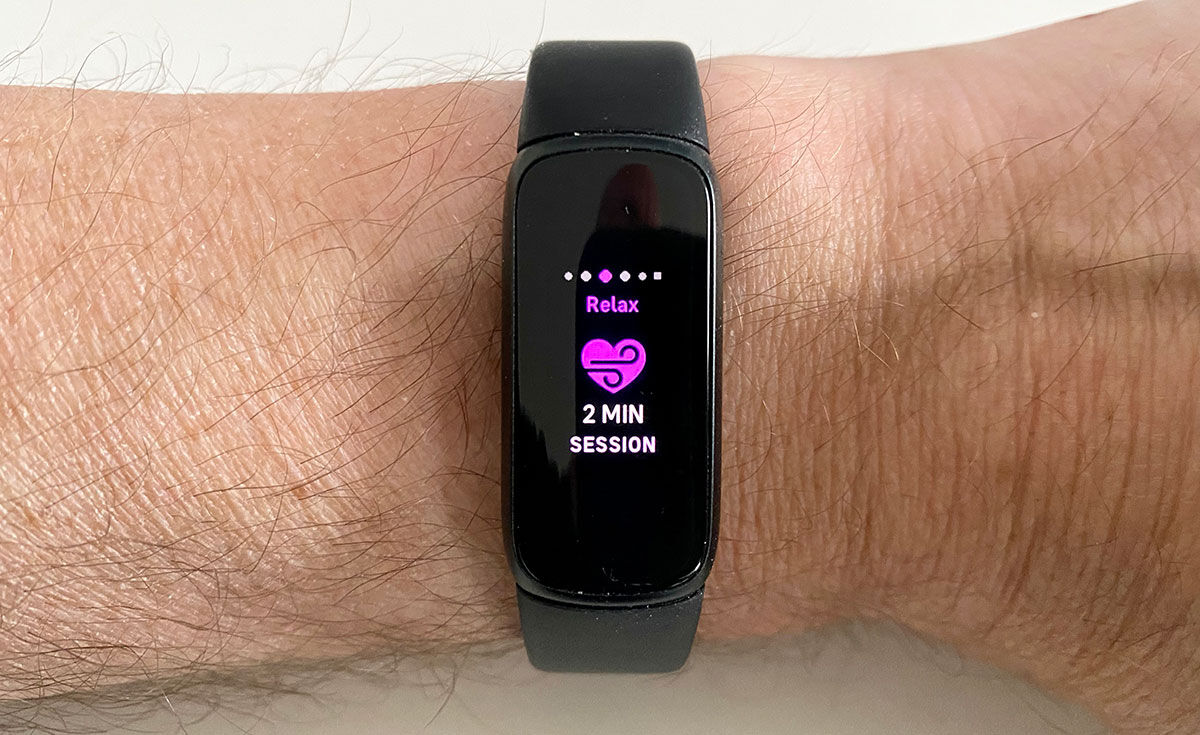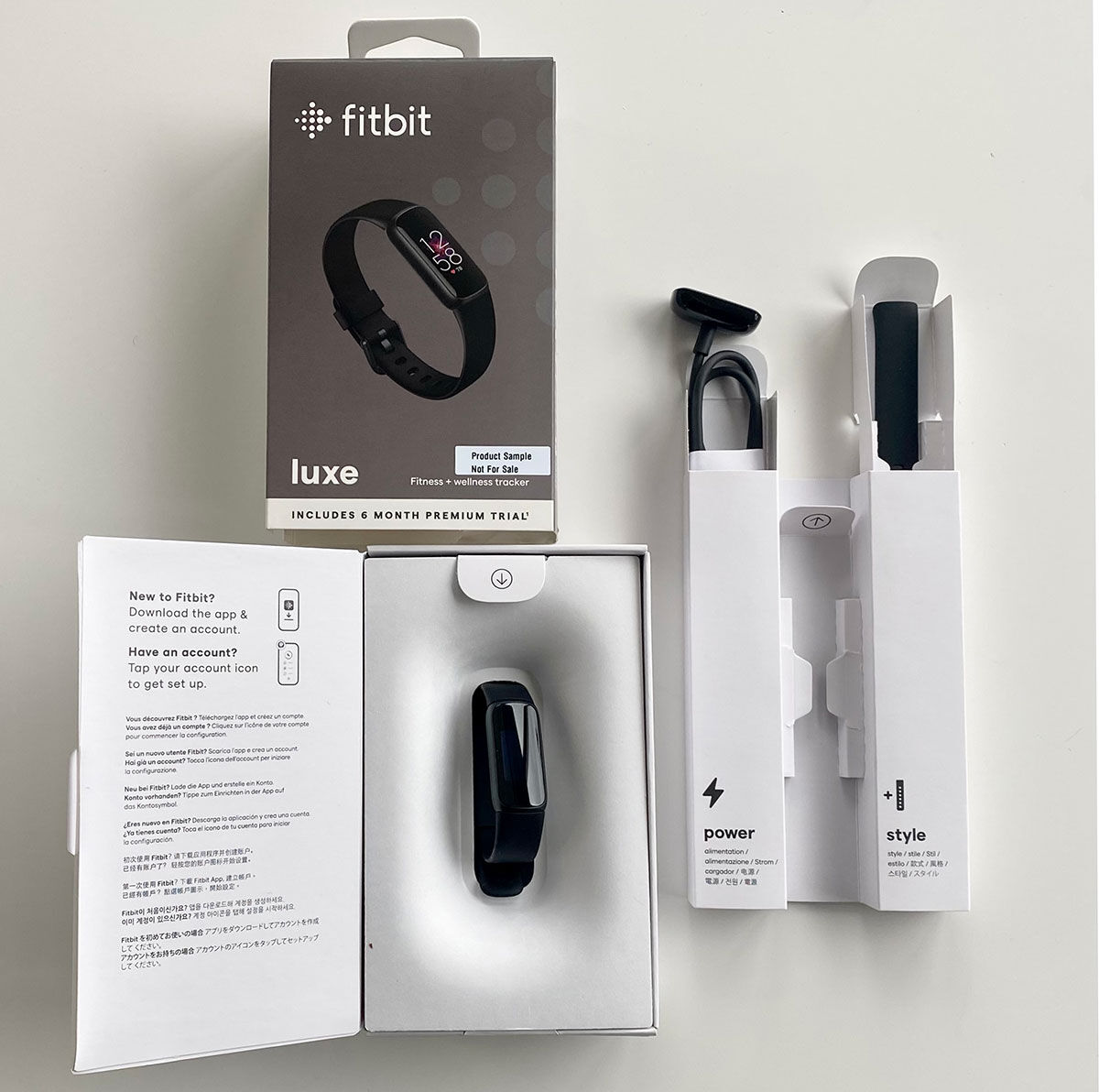The Fitbit Luxe is the first of a new line of Fitbit activity trackers, packed with all the basic and some advanced features, and boasting a colour AMOLED display – something of an exclusive in the company’s non-smartwatch range.
As its name implies, the Fitbit Luxe has aspirations to appeal to the fashion and jewellery market with a variety of bracelet-like accessories available as extras.
On features, it matches the entry-level Fitbit Inspire 2 but its colour screen is a step ahead of all the other mono Fitbit trackers. Read our Fitbits compared roundup for full details of the range.
The Luxe is no smartwatch, but it’s a slim and attractive tracker that will get noticed for its looks as much as its fitness and wellness features.
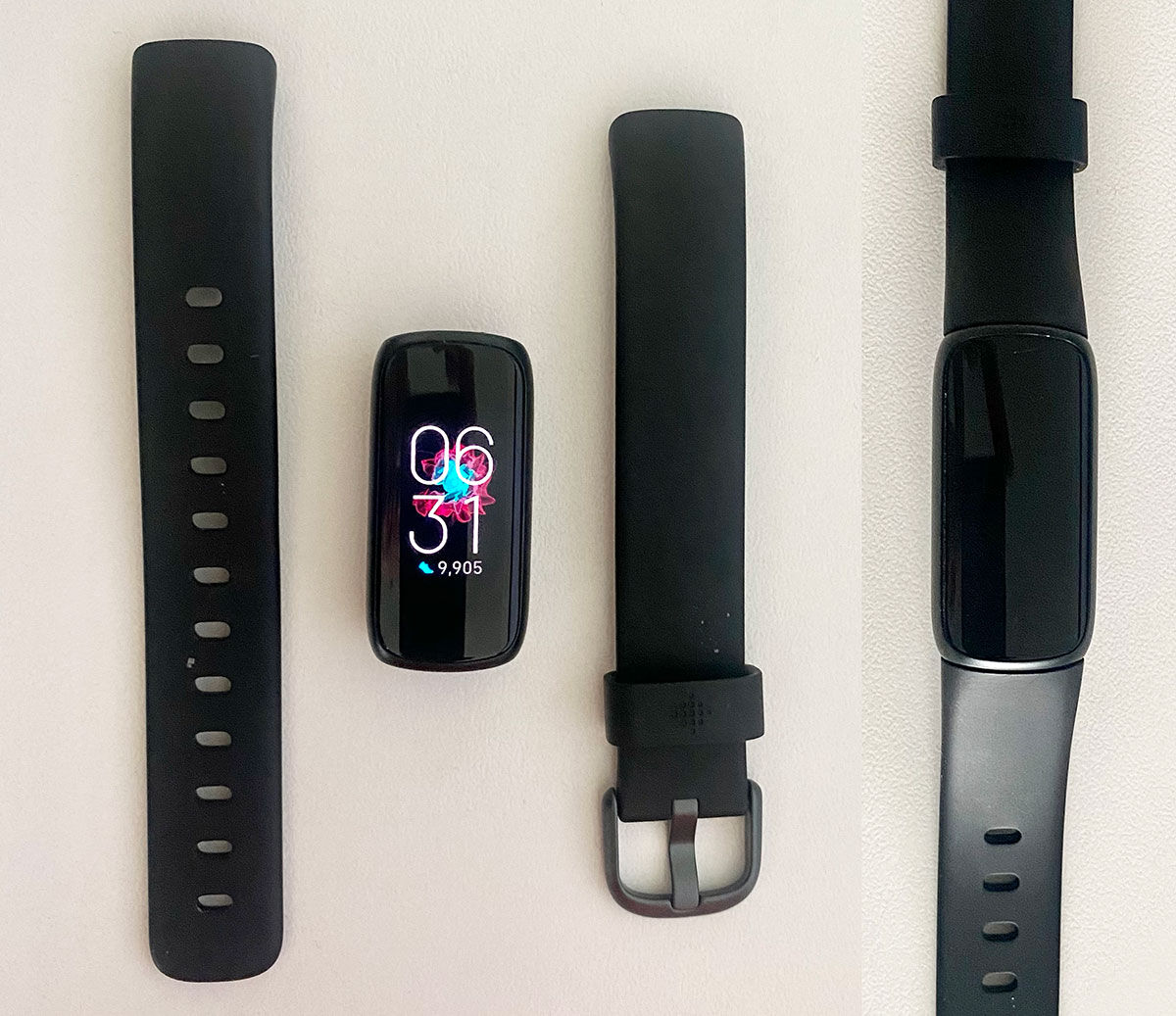
Design and build
The Luxe looks a lot like the Fitbit Inspire 2, although it’s a fraction slimmer, is built using stainless steel rather than plastic, and boasts a superior screen.
The tracker itself – the central part with the screen – is water-resistant up to 50m (5ATM), and comes with two sizes of Classic silicone wristbands in the box, so you can choose which fits you best.
At 40g, it’s lightweight and comfortable. You won’t realise that you’re wearing it, and it certainly shouldn’t disturb your sleep – unless you set a vibrating alarm to wake up to. It’s a little heavier than the 37g Inspire 2, but that’s not surprising given its stronger metal build.
The tracker itself measures 3.7cm in length, 1.68cm wide and is 1.29cm deep (1.43 x 0.69 x 0.4in).
It doesn’t have a physical side button so touch-sensitive taps or squeezes aren’t part of the equation here. Instead, the Luxe uses four-way tap and swipe navigation, via its touchscreen. As there’s no back button, a swipe right serves as a back gesture, while a double-tap on the screen lets you immediately return to the main watch face from anywhere within the Luxe’s various menus.
The colour AMOLED display is a definite advantage to the monochrome screen you get on other Fitbit trackers, like the Inspire 2 and Charge 4, as the various metrics displayed are made easier to read and discern, even in bright sunlight.
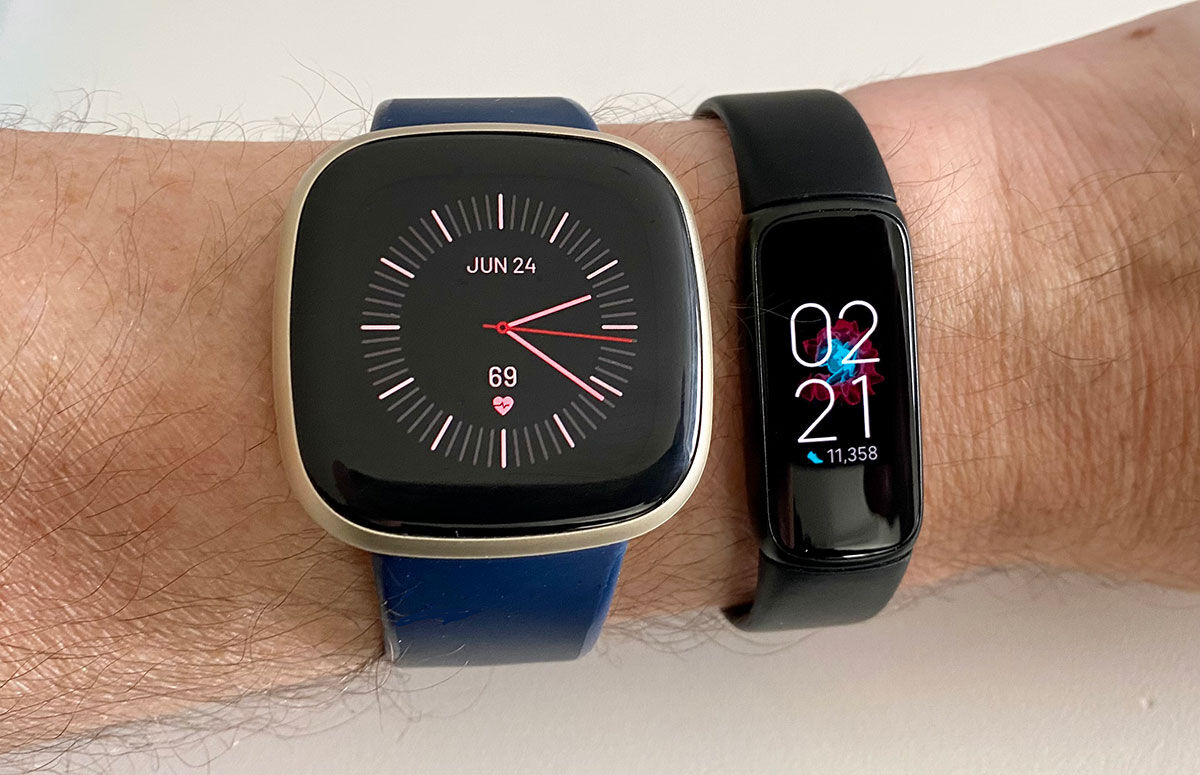
While colour is a nice touch, the Luxe’s screen isn’t large enough to offer as much glanceable insight as one of Fitbit’s smartwatches, such as one of the Versa family or the Fitbit Sense.
Its slimmer design might better appeal to your fashion sense, though. The market-leading Apple Watch might have a larger choice of bands but the Watch itself is basically the same shape in two different sizes. Fitbit’s range offers a greater variety of wrist-based tracker/watch styles, and the Luxe proves that this strategy is aimed at a more style-conscious market.
It’s slight but not delicate, although it might not suit you if you have larger wrists.
The silicone Classic band that the Luxe comes with (both Large and Small bands are included in the box) features a secure aluminium buckle that means it shouldn’t fall off, even during the most vigorous exercise.
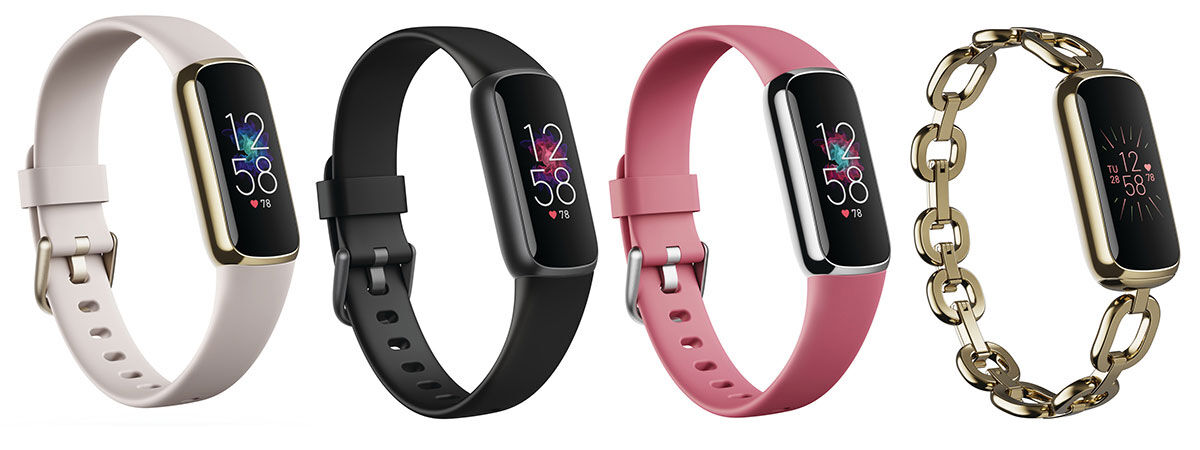
The Luxe is available in the following colour options:
- Soft Gold Stainless Steel tracker with Lunar White band
- Graphite Stainless Steel tracker with Black band
- Platinum Stainless Steel tracker with Orchid band
You can also accessorise with additional bracelet options and actually swapping the bands is an easy process.

There’s a soft pink Peony Classic Band, plus stainless steel mesh bands (Platinum and Soft Gold), Woven (Slate and Hibiscus), and a stylish Double Wrap Leather option (in orange Sunrise, Black, and Earth Grey Croc), from £19.99 or US$29.95.
There’s also a Special Edition version of the Fitbit Luxe, with a Gorjana Soft Gold Stainless Steel Parker Link Bracelet. A Platinum bracelet colour is also available as an accessory. The Special Edition doesn’t boast any extra features, just the fancy bracelet.
Features and tracking
The Fitbit Luxe is an activity tracker but, like all Fitbits, it offers more than just step counting, reaching into health metrics and wellness features such as stress management.
The basic fitness measurements are Steps, Distance and Calories Burned.
The Reminders to Move feature motivates you to get up and start moving, pushing you to hit at least a 250 steps-per-hour goal. I used this as my main target (beyond the basic steps count) as a sedentary lifestyle can be just as unhealthy for you as a poor diet and lack of sleep.
Away from steps, you can set yourself targets for Calories Burned, Distance and Active Zone Minutes, and the Luxe will give you real-time updates when each is reached. If weight loss is a goal, consider pairing your tracker with a set of digital scales. For the best experience, the Fitbit Aria Air scale syncs directly with your app
Swim tracking includes lengths, duration, distance and pace. You need to add the pool length in the Exercise app first, but swim tracking is otherwise automatic.
The Luxe lacks an altimeter to count the number of floors you may climb during the day, so if you want to measure your stair climbing and hill walking efforts, the Charge 4, Versa 2, Versa 3, Sense and Ionic are the better options here.
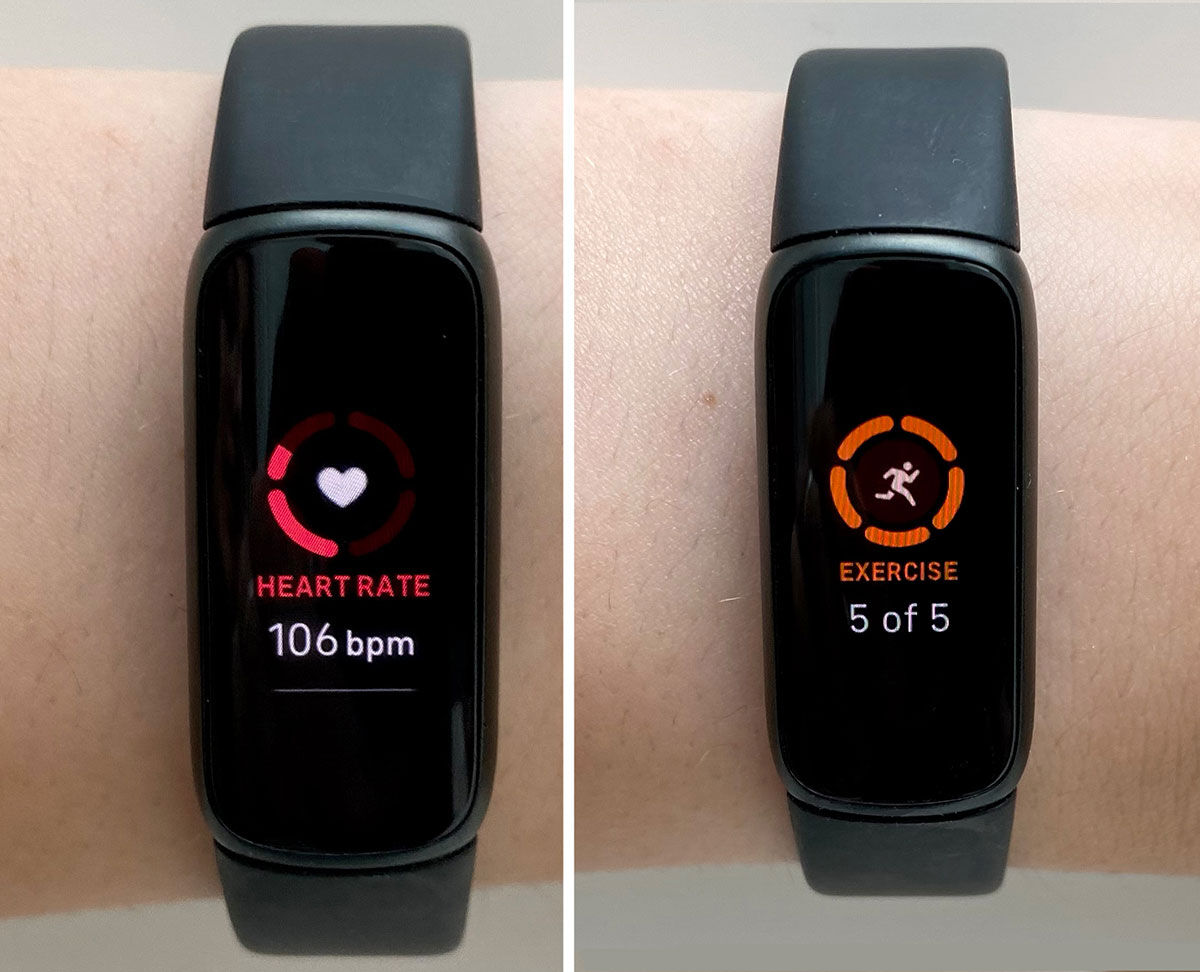
Heart rate and exercise
Key to its most important measurements is the Luxe’s optical heart-rate monitor.
24/7 heart monitoring gives you much deeper insight into your exercise and workouts, as well as an analysis of the quality of your sleep. It’s also used to personalise wellness features such as Guided Breathing sessions.
Fitbit sets heart-rate targets into zones: Fat Burn, Cardio, and Peak.
As you move in and out of these zones, you earn Active Zone Minutes, which is a far-better fitness metric than just how many steps you’ve taken in a set time period.
Knowing your resting heart rate (RHR) is also a key fitness indicator. A lower resting heart rate can indicate more efficient heart function and cardiovascular fitness. Poor sleep, stress and weight gain can raise your RHR. Walking, cycling and swimming are great exercises to lower your overall resting heart rate.
The Luxe automatically recognises when you are exercising: running, hiking, cycling, swimming, yoga, dancing, kickboxing, working out, and more. Indeed, you can track over 20 exercise modes with the Luxe – for example, golf, spinning and pilates.
The Luxe doesn’t feature built-in GPS, as you’d find on the Charge 4, Versa 3 or Fitbit Sense.
Instead, you connect to your phone’s GPS for pace and distance stats. If you run with your phone, you won’t miss the lack of built-in GPS, and you’ll save on the tracker’s battery life. But if you want to run without a phone, look at one of the Fitbits with built-in GPS.
Sleep, stress management and mindfulness
As with all of today’s Fitbits, the Luxe offers sophisticated sleep tracking. You can check both sleep duration and quality, all broken down into periods of Light, Deep and REM sleep.
Each morning, you’re presented with a sleep score; it’s a great motivator to get to bed earlier, but the tracker helps you in more ways than that.
Sleep is now recognised as a significant health factor, and having a deeper understanding of your nightly rest will help you improve your score and overall health. On waking, it’s the first thing I look for on my Fitbit.
Part of the sleep score is based on your sleeping heart rate being lower than your daytime resting heart rate. Aside from earlier decaffeination, you might want to practise mindfulness with Fitbit’s guided breathing sessions, which themselves are personalised to your heart rate too.
This functionality lives within the Relax app. The customisable two-minute Guided Breathing session cleverly utilises the colour screen, with purple rings indicating more successful relaxation, compared to blues and greens.
You can zone-out without having to keep an eye on the gently pulsing rings, as vibrations indicate when you should inhale and exhale as well. There are further mindfulness features within Fitbit Premium; see below.
Fitbit also gives you a daily Stress Management score, ranging from 1 to 100, and affected by your Autonomic Nervous System (ANS) responsiveness, exertion balance and sleep patterns, as measured by the Luxe. The higher the score, the fewer physical signs of stress.
Logging water and food consumption are performed in the app rather than on the Luxe itself, but you can see your progress (including weight) when the two are synced.
Menstrual health-tracking features that examine your cycle and symptoms are also included.
Read our full feature to learn more about all the Fitbit scores and measurements.
Average battery life
The Luxe offers five days of battery life, which is fine for an activity tracker but is half what you get from the Inspire 2 – presumably as a result of the addition of a colour screen, as otherwise the two trackers are very similar.
In our real-world tests, we got six days use from the Luxe before we needed to recharge, but we got 12 from the Inspire 2. It’s still a lot better than the Apple Watch’s 18 hours, however. Read more in our Apple Watch vs Fitbit comparison.
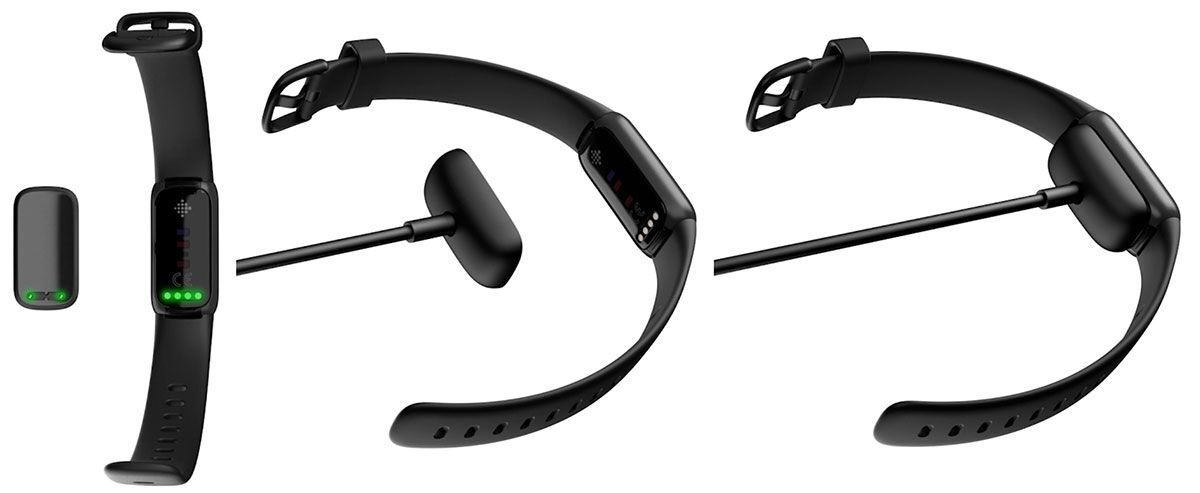
The Luxe relies on a proprietary charger, which connects to the tracker’s back; so you’ll need to have the cable to hand if it starts to fade.
Smart features & app
The Fitbit Luxe is a tracker rather than a smartwatch, so it lacks most of the apps you get with the Versa 3 or Sense. Having said that, the smart features you do get are the ones you would have used the most anyway.
You get on-wrist app smartphone notifications, including Caller ID, texts, and alerts for other messaging apps (for example, WhatsApp and Facebook).
There’s also a useful countdown timer and stopwatch. And you can set alarms, too – and this can be done on the tracker itself, unlike with the Inspire 2, which requires alarm setting via the Fitbit app.
There are 20 different clock faces to choose from but you can’t – as far as I can tell – customise the order in which the metrics and stats show up on your device when swiping, as you can with Fitbit’s smartwatches.
I’m surprised that the Luxe doesn’t come with the Tile location-finding feature that was recently added to the entry-level Inspire 2. It will probably be added later if the uptake on the Inspire 2 is positive.
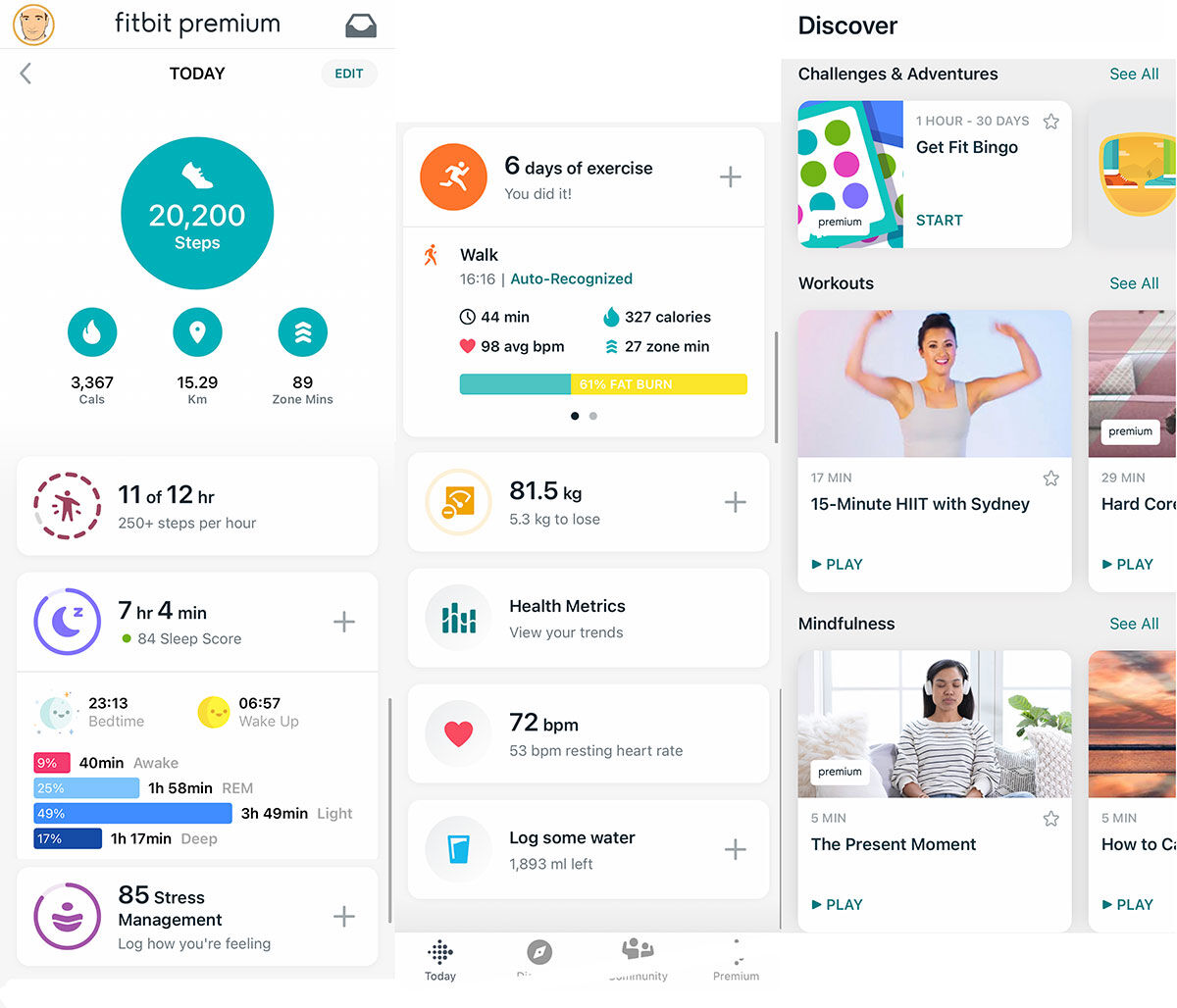
Maybe the best thing about the Luxe – like all the Fitbits – is the excellent mobile app that groups together all the stats you can see on the tracker, plus a lot more (and more again if you subscribe to the Premium service).
The competitive Friends Leaderboard, where you compete for the most steps in the past seven days, is a primary motivator for most Fitbit users. There are also accomplishment badges galore, and a great selection of virtual challenges and “adventures”.
While the cheaper Xiaomi Mi Band 5, for example, is possibly a better option for cost-effective activity trackers, its app is no match for Fitbit’s.
Extra features with Fitbit Premium
The Luxe comes with a six-month free trial of Fitbit’s Premium service, which normally costs £79/US$79 a year. Curiously, this is less than the Inspire 2’s full-year free Premium introductory offer. The more you pay for the model of Fitbit, the less free Premium time you get, it seems.
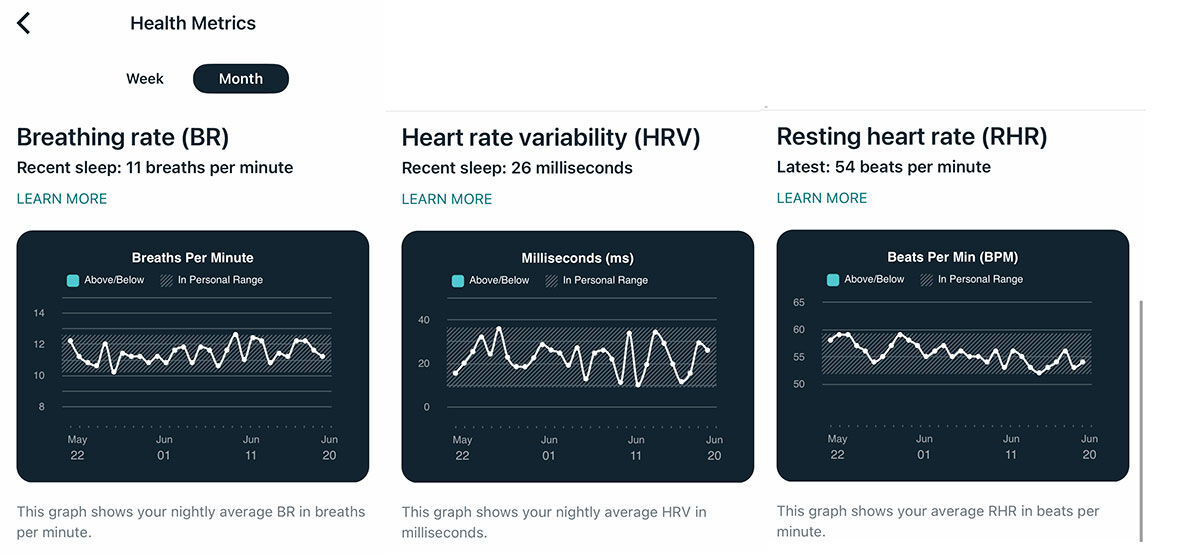
In the app’s Health Metrics section, all Luxe users can see their seven-day trends for breathing rate, heart rate variability and resting heart rate. Fitbit promises SpO2 blood-oxygen measurement in a forthcoming update, too. Subscribers to the Fitbit Premium service can see 30-day trends for these health metrics, too.
Premium also gives a more detailed analysis of your sleep score; for example, showing a graph of your sleeping heart rate.
To really take advantage of Premium, though, you should consider one of Fitbit’s colour-touchscreen smartwatches, which boast more features and can show some of the workout instructional visuals on the screen itself.
Price and availability
The Fitbit Luxe costs £129.99 in the UK, $149.95 in the US, €149.95 in the EU, $199.95 in Canada, and $199.95 in Australia.
You can buy it directly from Fitbit, from Amazon or any of the usual tech stores, wherever you are.
The Special Edition Gorjana Special Edition is priced at £179.99 (UK), $199.95 (US), €199.95 (EU), $249.95 (CA) and $199.95 (AU).
While it’s so new, we don’t expect to see many discounts but look out for the best Fitbit deals in our live feed.
Verdict
The Fitbit Luxe’s feature set covers all the fitness and wellness basics – steps, calories burned, Active Zone Minutes, distance travelled, heart rate, sleep tracking, swim tracking, guided relaxation breathing, the ability to auto-detect workouts, and smartphone notifications.
The colour touchscreen is really the Luxe’s standout feature in Fitbit’s range of trackers.
It’s noticeably pricier than the admittedly plastic and monochrome Inspire 2, and costlier than alternatives such as the Honor Band 6 or Xiaomi Mi Band 6 – although Fitbit’s holistic app-based experience is far superior.
Maybe the Luxe stands for “Inspire 2 Deluxe”, as that’s what you get with the superior stainless-steel build and colour screen; an improved Inspire 2 build but with the same fitness-tracking features.
The ability to dress it up with jewellery accessory options will appeal to many. But if you’re after the most affordable Fitbit, we recommend the Inspire 2 with its superior battery longevity, and if you want the best colour screen you should consider the Versa 3 smartwatch.
